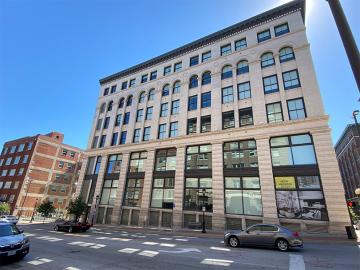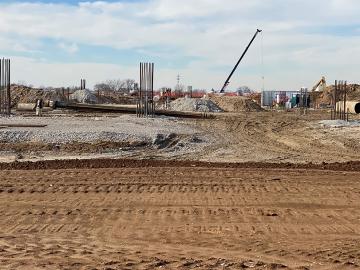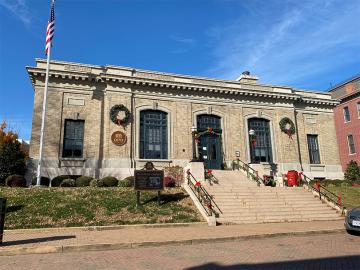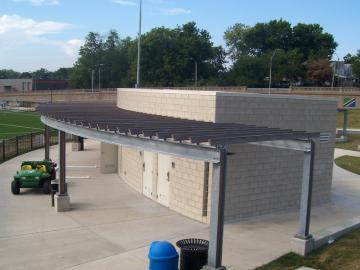
Missouri’s natural resources efforts certainly looked differently than it did decades ago. In 1974, Missourians recognized how important it was to protect and preserve our great state, and that’s when the Department of Natural Resources was created. Our work to protect Missouri’s natural resources is not a task that can be completed alone. It takes all of us working together to make a difference and obtain our achievements. With your continued support, we can help make Missouri an even better place to live, work and enjoy the great outdoors. We invite you to explore a few of our many success stories.

Folgers Coffee (Roaster's Block Apartment Complex)
The property was first used in the 1890's for various retail and manufacturing businesses. It was home of the Folgers Coffee Co. for more than seven decades. The meticulously transformed heavy timber, brick and concrete structures on the property are now part of the Roaster’s Block apartment complex. The environmental issues at the site were remediated, with an emphasis on salvage and recycling rather than sending waste to landfills.

Modern Distributing (Missouri State Highway Patrol Crime Laboratory)
Since 1925, International Harvester Co. used the property for various warehousing and other commercial operations. The site contained two large heating oil underground storage tanks, at least one of which caused contamination to the surrounding soil. The remediated and divided site now houses both the Missouri State Highway Patrol’s crime laboratory and the city of Springfield’s Jordan Valley Community Health Center.

North Central Redevelopment (North Sarah Apartments)
Multiple undeveloped lots and vacant and dilapidated buildings have spotted the area along N. Sarah St. in St. Louis for many years. The area was zoned residential with commercial and retail uses. Extensive remediation and removal efforts allowed for redeveloping the site into a multi-family, mixed-use development with residential, community and commercial space.

North St. Louis (National Geospatial-Intelligence Agency West Campus)
Twenty-seven city blocks within a historic neighborhood in St. Louis will be the new home for the National Geospatial-Intelligence Agency West Campus. An assortment of 551 properties, including a mix of residential and industrial properties dating back to the 1800s, became blighted with contamination from asbestos, household wastes and other contaminants. The 45 million cleanup and $1.7 billion budget to build and furnish the redevelopment project looks to serve as a catalyst for further development in the area.

Post Office Redevelopment (OPO Startups LLC)
A local entrepreneur purchased the 1908 post office building on Main St., with a dream of turning his hometown into a hub for high-tech, high-potential startups. The renovated 10,000-square foot facility was converted into a mix of offices, studio space and co-working space and now anchors the multi-building regional digital startup community in St. Charles.

St. Louis Port Authority Industrial Complex (River City Casino & Hotel)
The 80-acre site in Lemay saw heavy industrial activity since the early 1900s. Abandoned for many years, the St. Louis County Economic Development Council and the St. Louis County Port Authority cleaned it up to attract potential developers. Excavating and disposing of tons of contaminated materials and other wastes, and constructing a new thoroughfare, helped render the site eligible for redevelopment into a state-of-the-art gaming and mixed-use complex.

Van Brunt Street Car Barn (9th & Van Brunt Athletic Fields)
The site, located at E. Ninth St. and Van Brunt Blvd. in historic Northeast Kansas City, was previously used for streetcar maintenance, bus maintenance, body shop and fueling facility. The site has since been transformed into a community-gathering place and youth soccer complex, including an all-weather soccer field, amphitheater/ event plaza, walking trail and concessions building with restrooms.

Ecological Restoration Efforts Improve Water Quality in South Creek
A Section 319 Nonpoint Source Implementation subgrant improved water quality in South Creek, Greene County.

No Idling
Reducing idling at schools is important because air pollution affects children the most. Children’s lungs are sensitive and still developing; in fact, children breathe 50% more air per pound of body weight than adults do. Learn how students at the Center for Creative Learning in the Rockwood School District, St. Louis County, started an idling reduction program.

A Case of Duct Leakage
Mike Williamson suspected the heating and cooling system in his 14-year old house needed replacement. This prompted him to call a Home Performance with ENERGY STAR contractor for an assessment and quotation. The duct leakage was reduced 86%.
